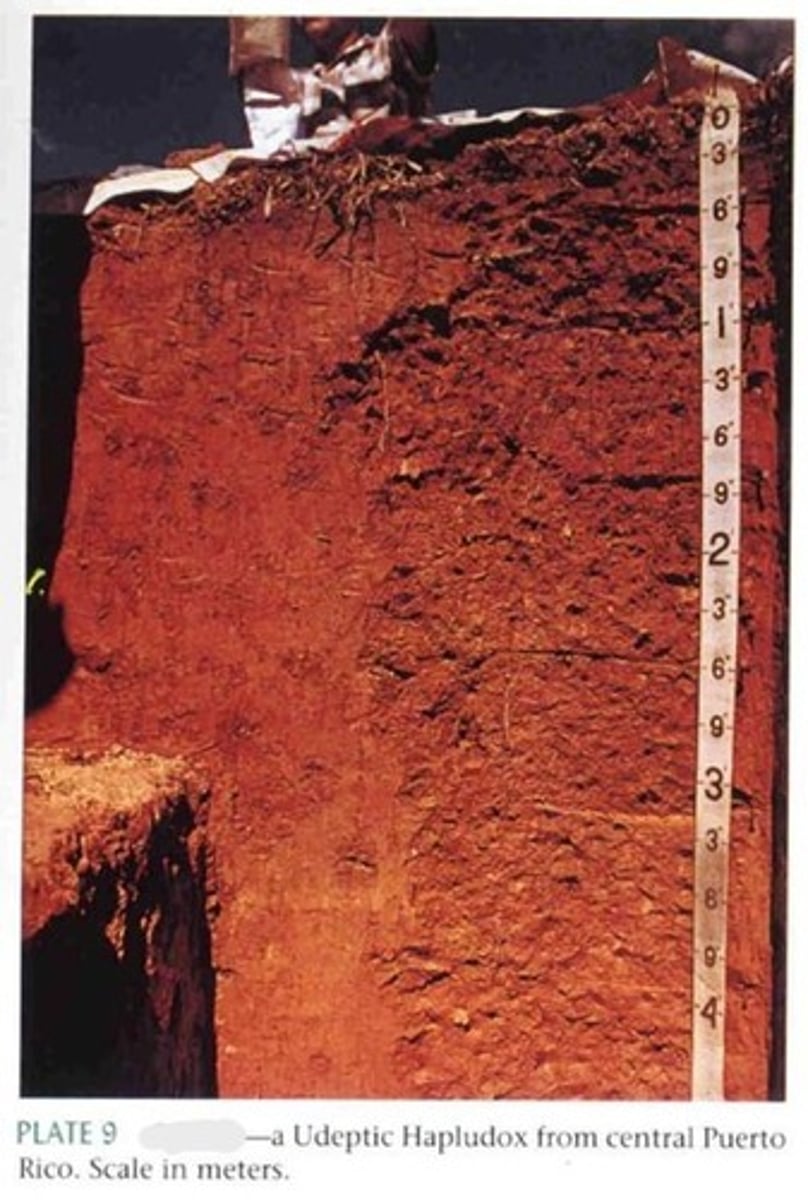dirt asf
1/90
There's no tags or description
Looks like no tags are added yet.
Name | Mastery | Learn | Test | Matching | Spaced |
|---|
No study sessions yet.
91 Terms
Hans Jenny
first person with a formula to describe soil
Guy Smith
produced the 1st of 7 iterations of soil taxonomy
Karl Terzaghi
father of soil mechanics
Peter Birkeland
connected soil and geomorphology
Robert Ruhe
using soils to understand glacial episodes
Cullen Sherwood
helped form the JMU geology department
_____ ______ a two-dimensional body, commonly studied in artificial cuts
Soil profile
____ ____: a three-dimensional body, with the same thickness as a profile but w a surfacr area that ranges between 1 and 100 square meters
soil pedon
soil dimension layers
OAEBCR
Major components of soil: _____ _____ (5%), ______ (45%), _____ (25%), and ____ (25%)
organic materials, minerals, water, air
____: consists of the surface and subsoil layers that have same soil forming conditions (_____ layers)
solum, oaeb
___ horizon: zone of leaching/removal
OAE
____ horizon: zone of accumulation
B
____ horizon: weathered parent material
C
___ horizon: super leeched, mostly quartz and sand grains, from developed soil
E
___ horizon: residuum (parent material)
R
____ horizon: plowed soil
Ap
____ horizon: translocation of clay (mature soil)
Bt
____ horizon: weak/juvenile horizon
Bw
_____ horizon: calcite rich (or carbonates)
Bk
____ horizon: fragipan soil, poor drainage, soils have X pattern
Bx
clay is common in __ horizons
B
silty loam is common in ___ horizons
A
Loam is common in ___ horizons over granites
A
texture is important in soils work as it reflect character of ____ ____, and affects ____ within the soil ( like drainage, horizon development, etc.)
parent material, processes
soil processes examples
degree of horizon development, drainage properties, engineering properties, degree of chemical reactivity, water retention, erosivity, and tilth
_____: actual color of the soil relative to the primary colors (first part of munsell color chart)
hue
_____: lightness or darkness of color (8 will very light, 2 is dark) (____/chroma for munsell color chart)
value
_____ or ____ features: show presence of long standing water
mottles, redox
_____: aggregation of soil particles
peds
A horizon structure types: _____ and ____
loose/granular, crumb
Bt horizon types: _____ _____and _____ _____, or _____ (salty soils)
angular blocky, subangular blocky, prismatic
____ ____ in soil increase water holding capacity and tilth, increases cation exchange capacity
organic matter
Vasily V Dokuchaev
father of modern soil science
How soils form
parent material (R) layer, surface organic increase (A,C), clay increase in B horizon (ABC)
______ ____: some layers are more resistant to weathering and some aren't (chunks of bedrock, soil not even depth)
pinnacle weathering
soils over igneous rocks (granite edition- on piedmont & blue ridge)
sandy A horizon, strong B horizon, saprolite base layer
______: residuum that has the appearance of rock but some properties of soil
saprolite
___: granites that weather to saprolite
grus
gabbro soil characteristics (piedmont)
heavy clay soils, shallow profiles, SOUPY!!
limestone and dolomite soils characteristics (valley and ridge) (this is harrisonburg!)
deep, well drained, clay-rich, productive
shale (sedimentary) rock soil characteristics
shallow, immature, low nutrients
sandstone (sedimentary) rock soil characteristics
shallow profile, excessively drained, sandy textures
floodplain soil characteristics (alluvium transported soil)
young sandy soil, moist, productive, poor horizon development
terrace soil characteristics (alluvium transported soil)
varying ages/development, friable, productive
base of steep slope soil characteristics (colluvium soil)
thick, moist, weak profile development
debris/alluvial fan soil characteristics (colluvium soil)
thick moist, weak profile development, productive
loess soil characteristics (from aeolian (wind) processes)
high silt, weak to moderate profile development, productive but highly errosive
glacial till soil characteristics (glacial processes)
highly dependent on mode of deposition, weak profile development, often rocky thin profiles
_____ is the most important factor in soil development on a global scale
climate
microclimate soil processes include: _____, _______, _____; these can control local moisture and temperature conditions
exposure, boulder, hillside
______ ____: affects soil formation by type of material (most rocks have low conductivity), moisture, albedo (light reflection), depth of frost
heat conductivity
______: affects soil formation as it can provide coolness and moisture
vegetation
_______: (moisture regime) soils of temperate areas that experience moist winters and dry summers, mediterranean climates
xeric
________/______: (moisture regime) soils are dry more than half the time
aridic, torric
______: (moisture regime) in most years soils are dry for 90+ days and moist in some part for half the days the temp is above 5C
ustic
_____: (moisture regime) in most yeawrs soils are not dry more than 90 consecutive days
udic
______: (moisture regime) in most years precipitation exceeds evapotranspiration every month of the year
perudic
_____: soils are sufficiently saturated, usually reduced and mottles or gleyed
aquic
soil temperature regime range (from really hot to really cold)
hyperthermic, thermic, mesic, frigid, cryic, pergelic
(old zonal system) _____ soil west of missippi and ______ east of missippi
pedocals, pedalfers
________: (recent) soil on flooplains, little to no horizon development, usually no B horizon, pretty infertile, YOUNGEST SOIL
entisol
_______: (beginning) upland soil, weak horizon development, thin B horizon, common on steep slopes esp. shales
inceptisol
______: (last) acidic leached soils of warm humid climtes, B horizon w claysssss, sometimes has E horizon, frederick soil series, pretty (lowkey the most developed) ngl
ultisols
____: (Al and Fe concentrations) strong Bt horizon, full of Al and Fe, high base saturation, heart of corn belt and pretty fertile, less oxidation
alfisols
____: (oxide) oxidized tropical soils, highly weathered and pretty infertile
oxisols
______: (soft) base-rich soils that have thick dark A horizons, usually in savannas/steppes, black fertile and high in organics, high in silt, feeds 75% of the world
mollisol
_____: (dry) soils of dry climates w some B horizon, low organics but high fertility, found in cold and hot deserts, similar to ultisols but lacks moisture
aridisols
______: absorbs water with lots of salts but water evaporates and leave layers of minerals behind, common with aridisols
caliche
______: (to turn/mix) dark soils of semi-arid grasslands and savannas, high in clay, dark because lack of oxidation
vertisol
______: (wood ash) soils common in new england, has a layer of sandy ash on top
spodosol
______: (tissue) organic soils without shallow permafrost, sooooooo much decomposing organic matter, just gobs of plants
histosol
____: (to freeze) soil with permafrost below A horizon, leached low nutrients
gelisols
_____: soils that have often formed in parent material with a large component of volcanic ash, most common in PNW
andisols
_______ _____: slope factor dictates what soil will be present in a landscape
soil catena
_______ are similar to inceptisols but has a weaker horizon
andisols
_______ are close to ultisols but lack moisture
aridisols
_____ are close to ultisols but are as developed as ultisols (ultisols more leached and acidic)
alfisols
alfisol, andisol, ardisol, entisol, gelisol, histosol, inceptisol, mollisol, oxisol, spodosol, ultisol, vertisol
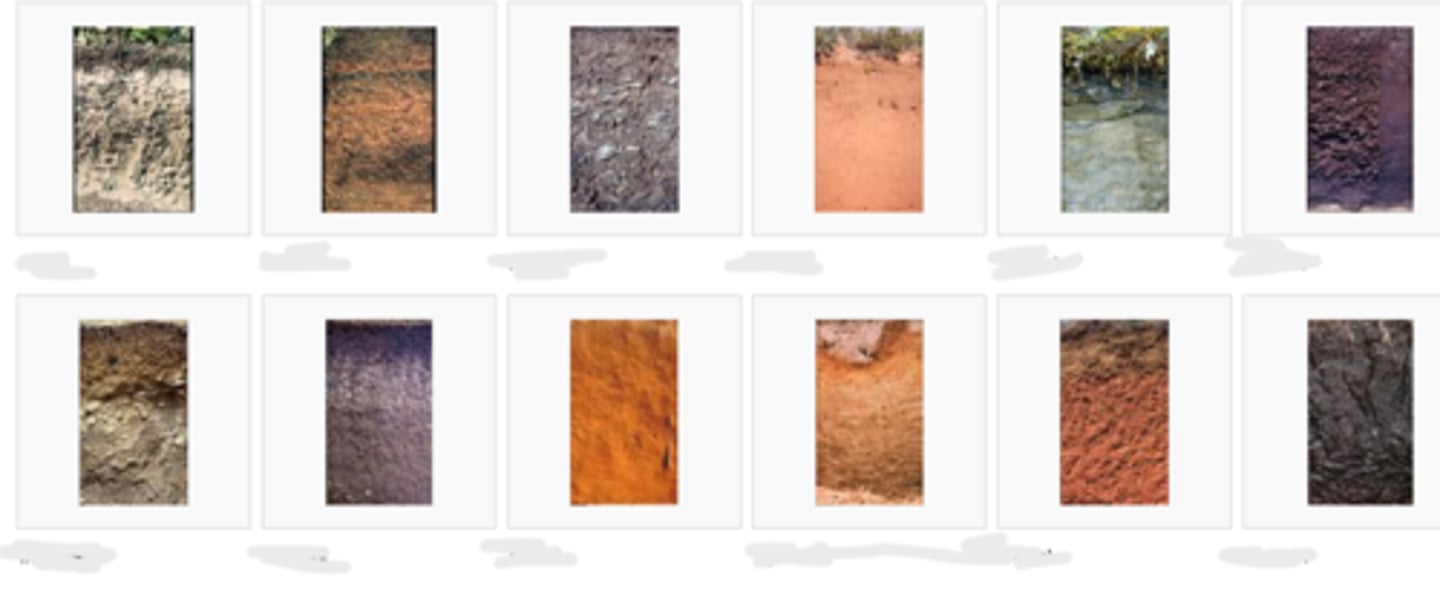
entisol
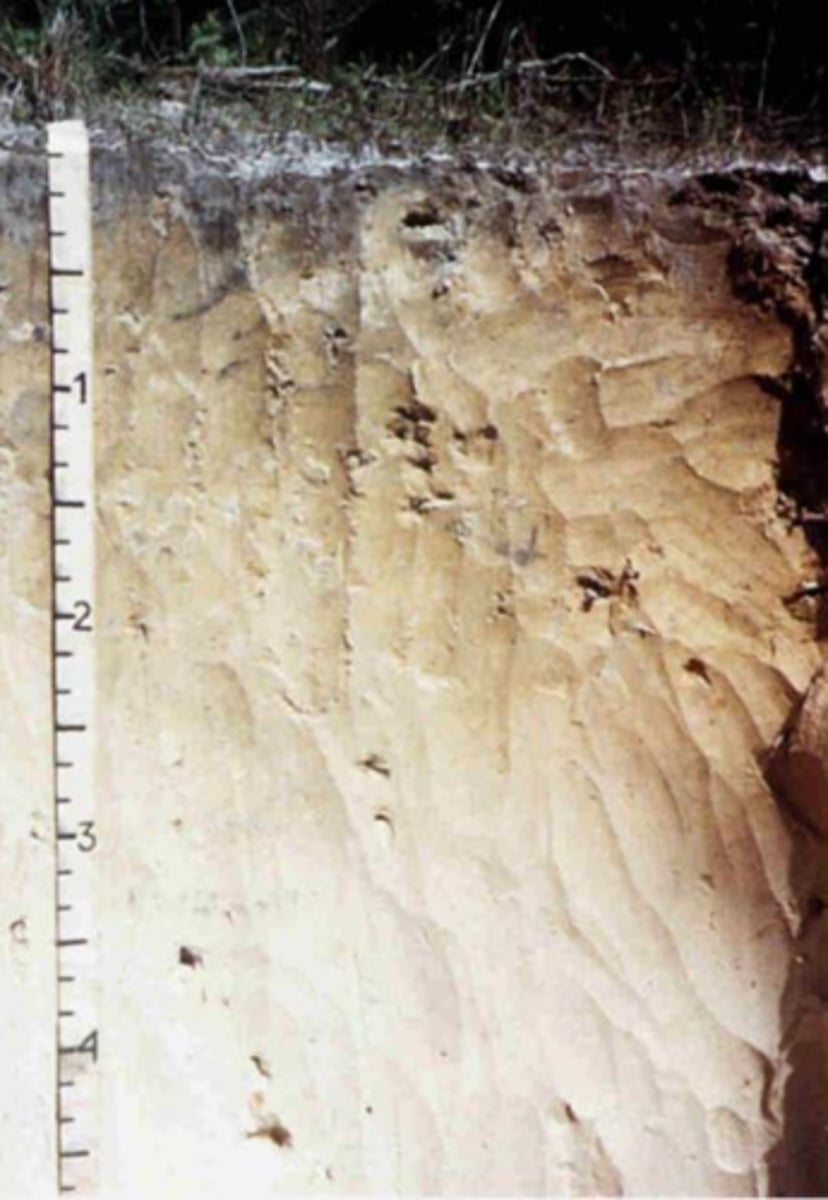
inceptisol
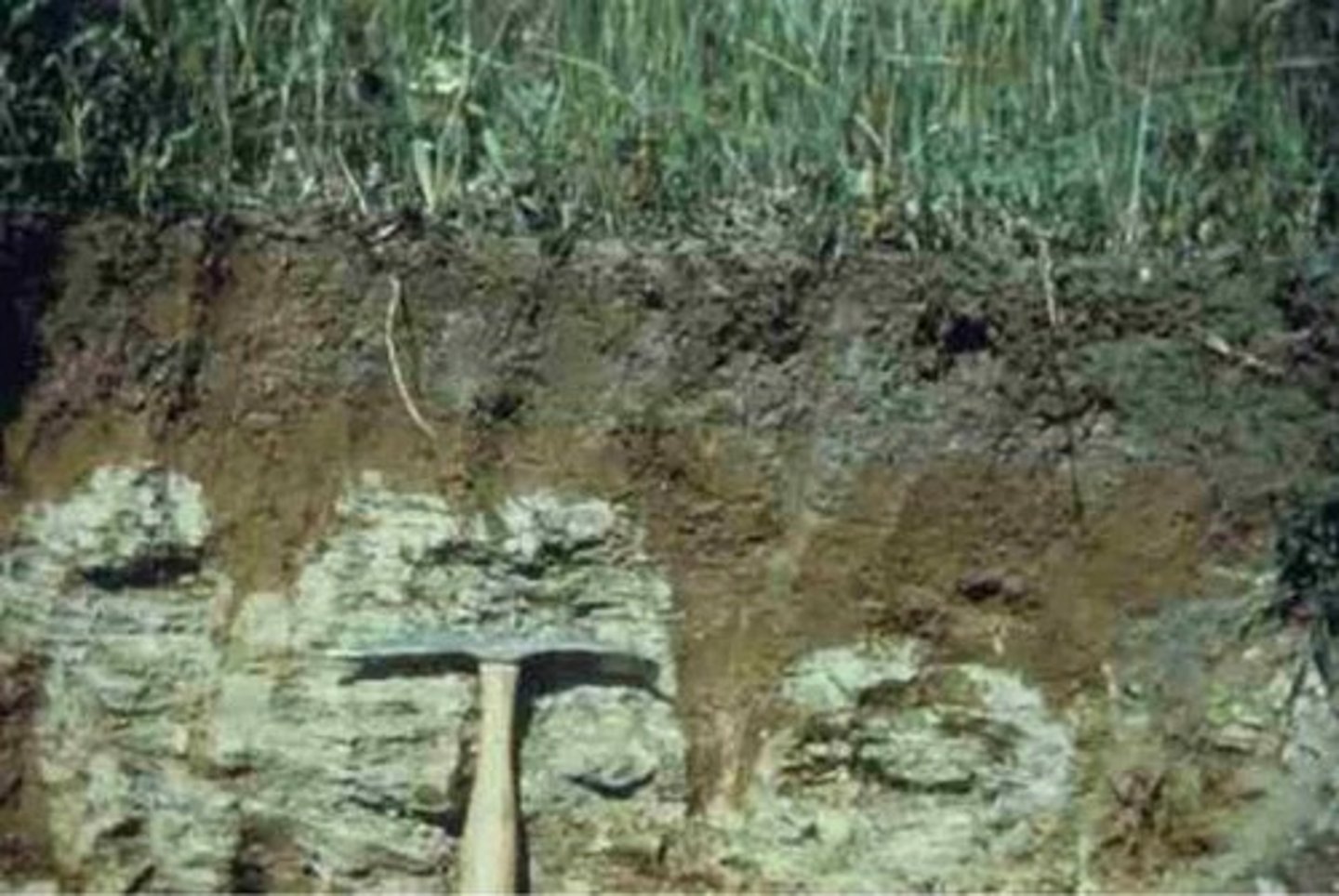
ultisol
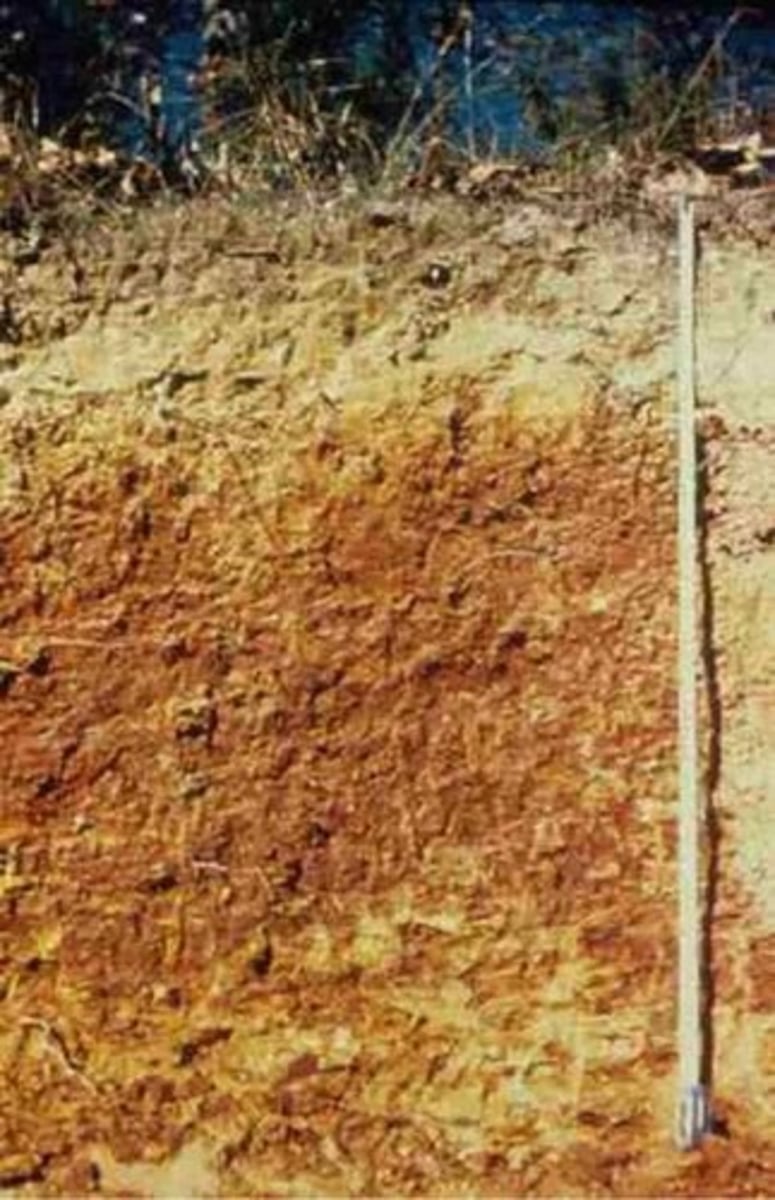
alfisol
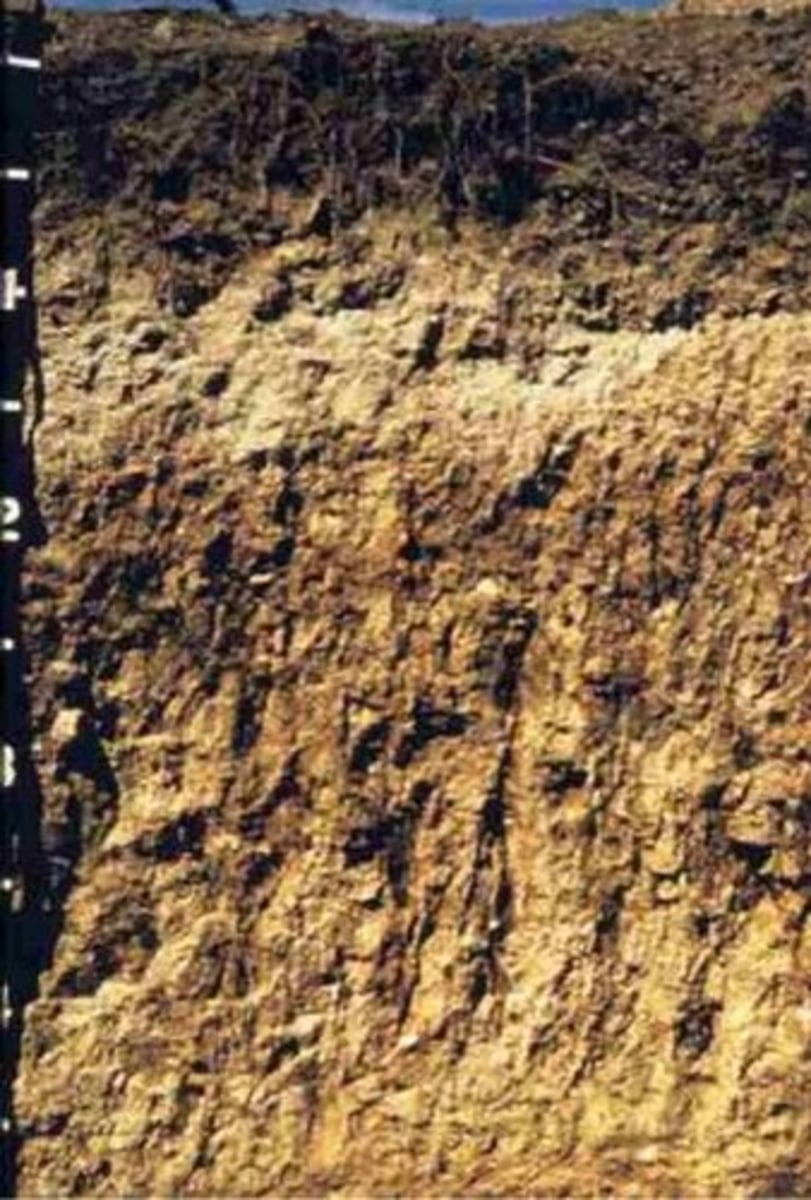
mollisol
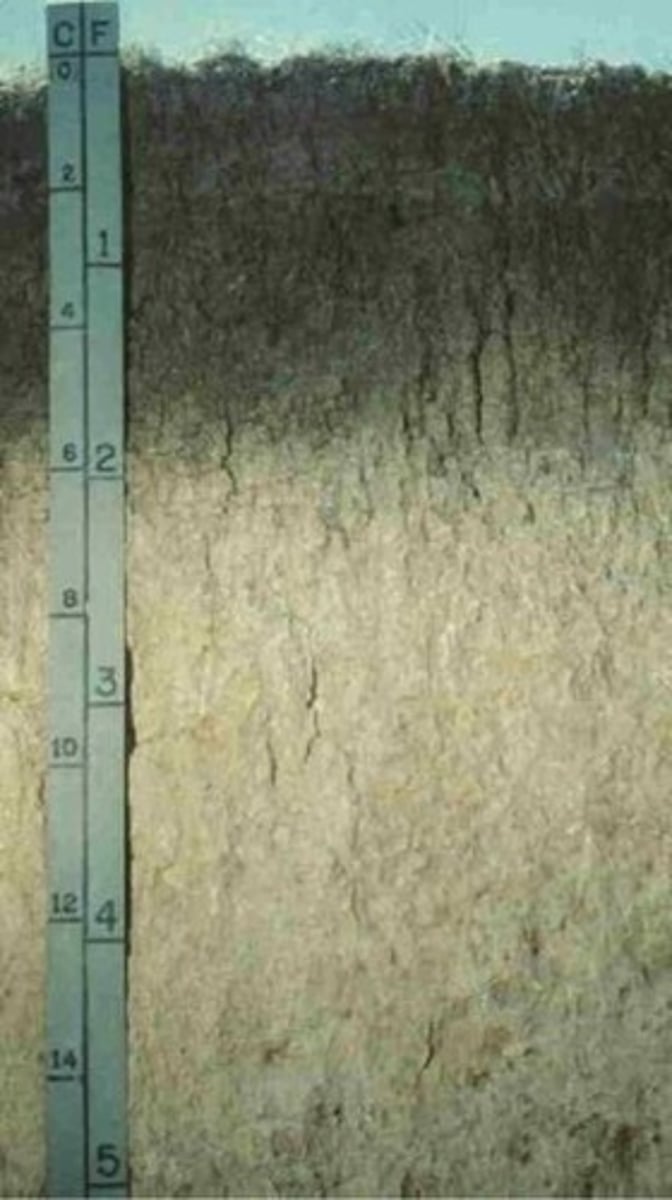
aridisol

vertisol

spodosol
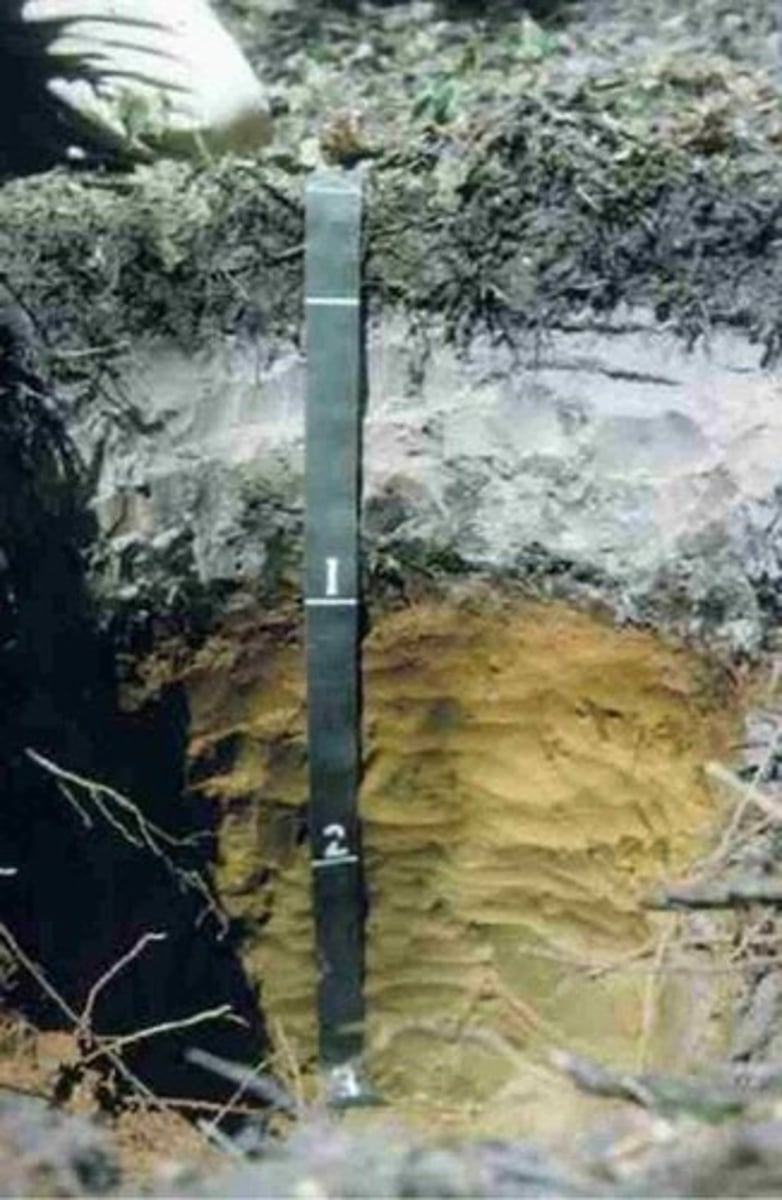
histosol
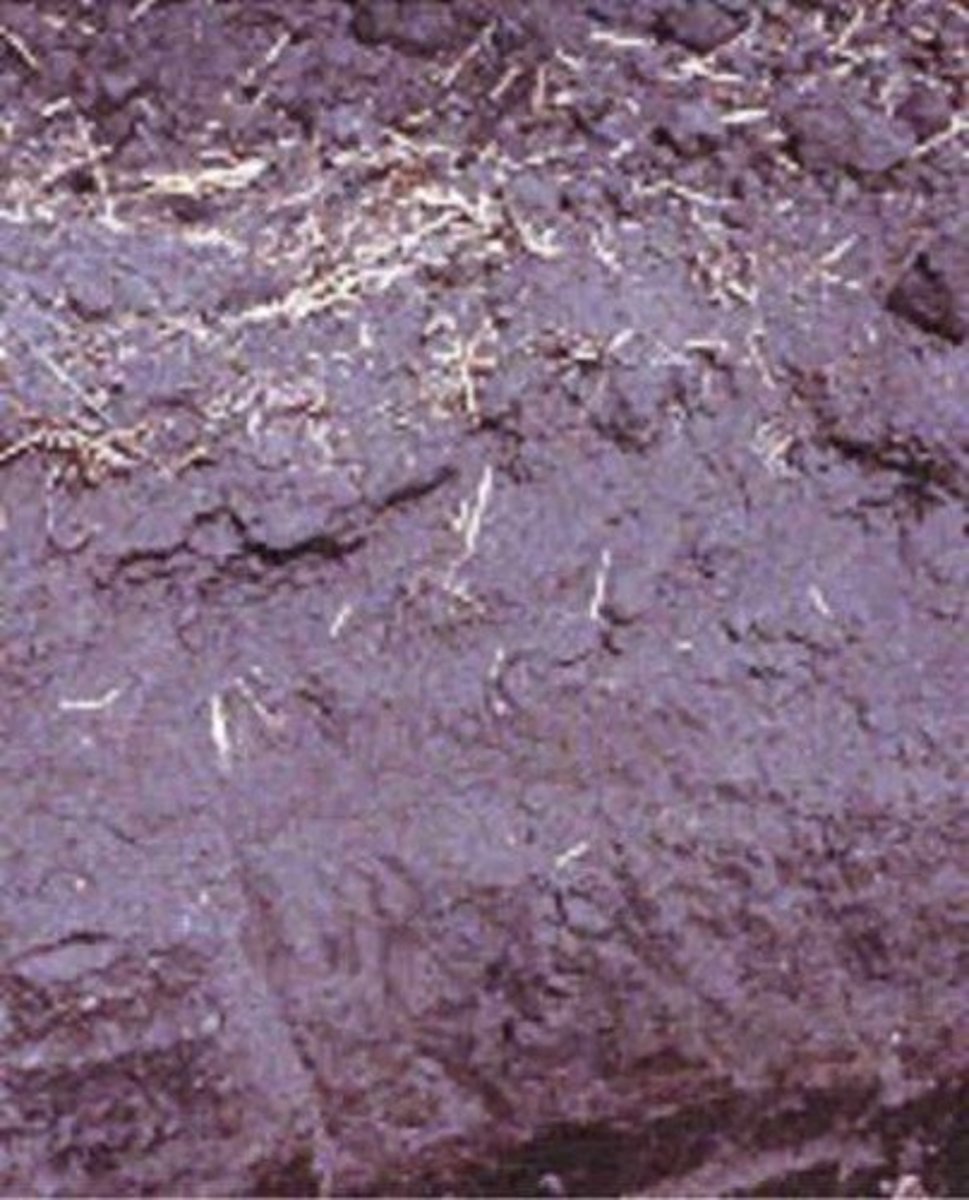
andisol
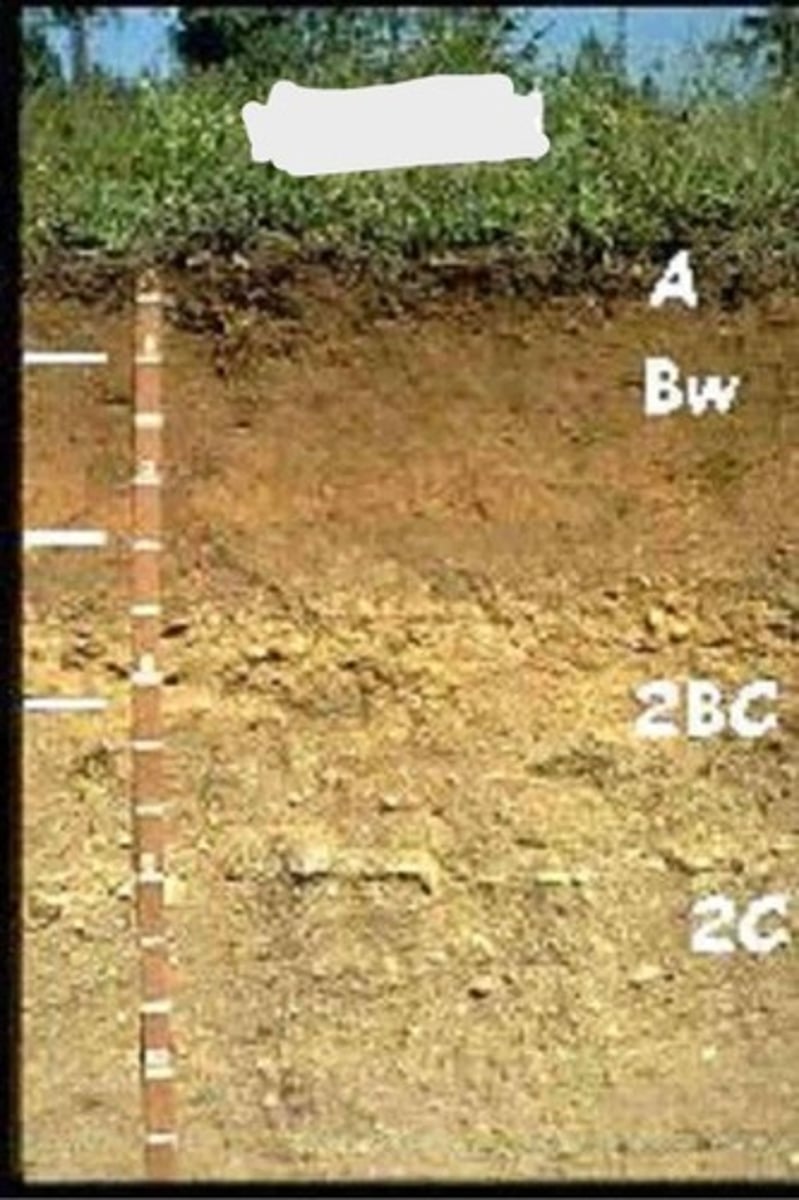
gelisol
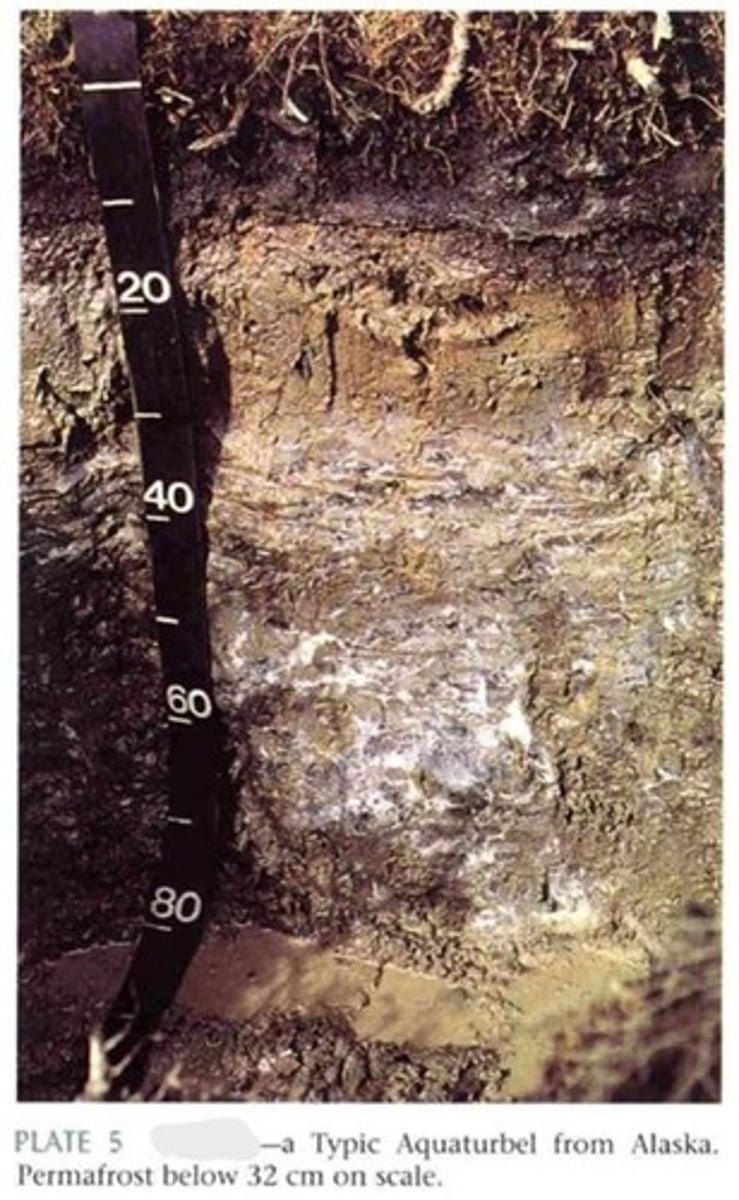
oxisol
